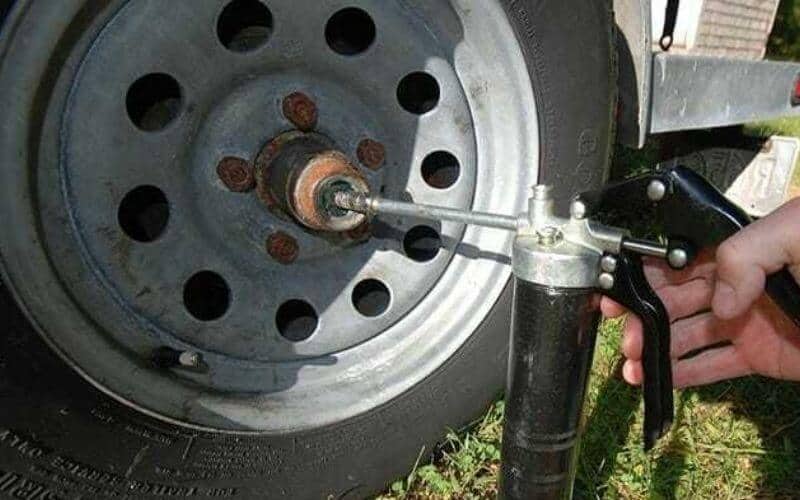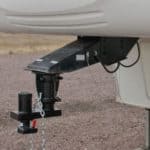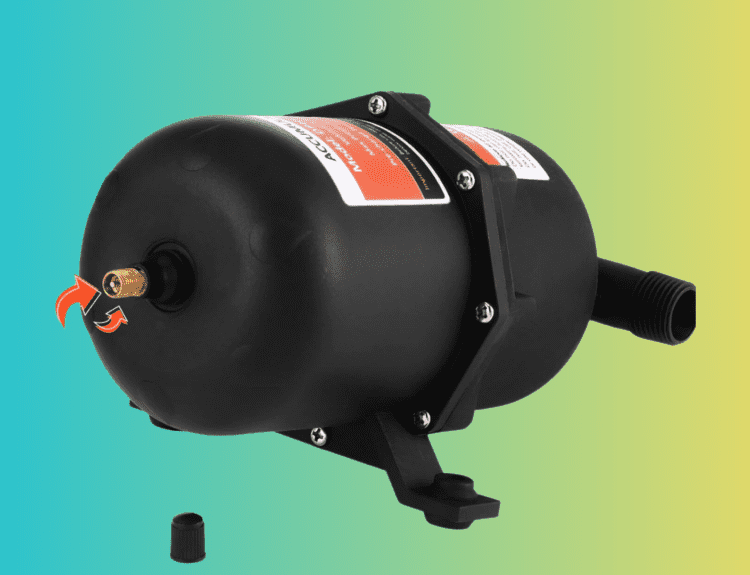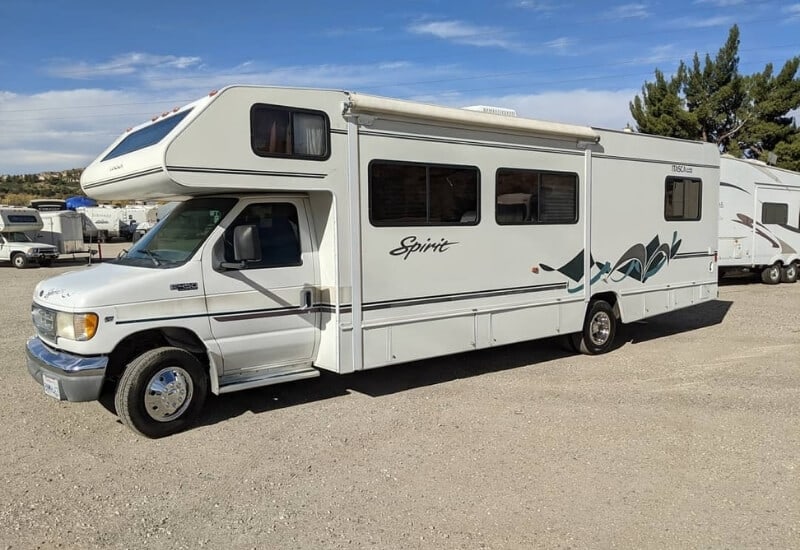One of the most important parts of your travel trailer is its wheel bearings. Are you wondering why? The answer is simple, without them you cannot support the trailer’s weight.
Proper maintenance ensures that your trailer’s wheels spin without any hindrances. Neglecting your wheel bearings will cause them to leak and ultimately deteriorate.
Asides this, they will attract a lot of foreign objects like dirt and dust that will contaminate the bearings.
So how often should you grease travel trailer wheel bearings?
You need to grease your travel wheel bearings at least once a year or every 10,000 to 12,000 miles, depending on which comes first.
In this post, we will discuss why you should grease them and how often it should be done and best wheel bearing grease for travel trailers. We will also teach you how to grease the bearings efficiently.
Why You Need to Grease Your Wheel Bearings
The importance of the wheel bearings to your travel trailer cannot be overemphasized.
You should know this if you have owned a travel trailer for a while or you know about their mechanics. Whether you like it or not, without the bearings, you are not traveling far.
You probably wouldn’t travel at all, that’s how important they are.
One would have thought that with how important these components are, they will be cared for a lot. The opposite tends to be the case as many travel trailer owners even forget that they exist.
As a result, they do not enjoy a lot of maintenance. It is mind-boggling that we neglect our wheel bearings so much when they don’t even require much maintenance.
When you don’t pay attention to the welfare of these components, a lot can be lost preventing you from traveling.
Many people forget that the wheels wouldn’t even spin properly but for the wheel bearings. If your wheels are having problems spinning, then your trailer wouldn’t go too far.
While the wheel bearings are not the only components that help in moving your trailer, they are very important.
Wheel bearings cannot function optimally if they are not lubricated. This is why you have to check them regularly.
There are greases designed for wheel bearings, we advise that you don’t use any other type. Always check to be sure the grease was made for wheel bearings specifically before buying and using it.
The grease will not last forever so the more you travel, the more your wheel bearings need repacking with grease.
When Should you Grease Your Bearings
The efficient management of your travel trailer wheel bearings depends on two key factors. They include:
-
The average load weights.
-
The wheel sizes
Best practice recommendations suggest that it is important to check the wheel bearings at least once each season.
This means that you should check your wheel bearings every year to be sure they still have grease. Of course, within this period, it is expected that the grease should have depleted so you will have to repack.
When you travel a lot, a school of thought suggests that you check and grease the wheel bearings after 10,000 miles. These two suggestions hold for bigger travel trailers.
What if you have a smaller travel trailer, how often should you grease the wheel bearings? Since the wheels on a small size trailer are small, they need to be greased every 2,000 miles.
This is because the wheels spin a lot faster due to their small size. The faster the wheels spin, the more stress on the bearings.
All in all, you should take into consideration the use of the trailer in determining how often the bearings need grease. Along with this, you should also consider the kind of locations you drive to.
Considerations
Professional mechanics will always charge greasing per axle. This is quite costly but you can do it at home at a cheaper cost.
To do this, you need to have an idea about the basics of greasing. You also need to know all you need to carry out the process.
Along with this, it is important to understand mechanical aptitudes that govern the process to do it perfectly.
Some of the pieces of equipment you need include rags, a torque wrench, a wheel jack, a hammer, and high-temp grease.
Though a bearing packer isn’t necessary, you may want to get one. It will help you achieve a cleaner finishing than when it is absent.
Identification
For at least 50 years, wheel bearings have not exactly changed, neither has the process of repacking.
It is important that you have gone through the service manual that comes with your trailer before you begin. The instructions in the manual will guide you through the repacking process.
It is also important that you torque the wheels of your trailer properly.
Make sure you are doing this with the right trailer jack.
Since you will be working underneath the trailer, you should lift the wheels on opposite sides.
Warnings
Asides the prescribed one-year period, 10,000 mile or 20,000-mile distances, your trailer may give you warnings.
When you get these warnings, then you should check the wheel bearings immediately.
We will present to you a few situations and warnings you must quickly respond to in the next few paragraphs.
Number 1
If your trailer has recently carried very heavy loads or its axles have been submerged in water, maintenance is necessary.
This is very important because water will affect a seal, no matter how good it is.
It is always important to repack the bearings after driving through water. If the bearings are factory-fitted, then being alert to premature failure is extremely important.
Number 2
When buying a trailer from a dealer, you should check the bearings for excessive friction. Many times, manufacturers leave out greasing the bearings before delivery to dealers.
The best way to check is to touch the tire after driving a distance. If the bearings are poorly lubricated, the tire will be hot.
Number 3
When you hear an unusual noise from your travel trailer’s wheels, you need to check the bearings.
Such noises include growling, rumbling, chirping, and cyclic sounds. It is possible that as you travel faster, the noise becomes more audible.
Once you notice this, it is best to get the trailer to a professional instead of taking the risk to travel.
Sometimes, the wheel bearings may be greased but if they are factory sealed, they must be replaced. The professional will determine this after proper inspection.
How to Grease Trailer Wheel Bearings
So far, we have discussed why you should grease your wheel bearings and how often you should do it.
Just so you know, here is a list of events that will occur when you don’t maintain your trailer’s bearings.
These events are arranged chronologically so you can know what stage you are in now.
-
Condensation begins to occur if you haven’t moved the wheels for a long period.
-
Because of the condensation, the inner part of the bearings will begin to rust.
-
Soon, the rust particulates will begin scratching the inner part of the housing.
-
These scratches will cause excessive friction that will eventually lead to failure.
Greasing your wheel bearings doesn’t require being a professional mechanic. With this step-by-step guide, you can do it from your garage.
What you need to repack your travel trailer’s wheel bearing
-
Chisel and hammer
-
Paper towels
-
Trailer jack
-
High-temp wheel bearing grease
-
New seals if necessary, along with cotter pins for all the wheels
-
The required torqueing amount your trailer wheels need. This is usually stated in the service manual accompanying your trailer.
-
Pictures of the disassembled wheel bearings. This will help you assemble them back with ease.
-
Wheel bearing packer or grease gun.
Steps to help you repack your wheel bearings without stress
Step #1
The first thing to do if this is your first time with your trailer is to read the service manual. If you don’t have it then you should contact the trailer manufacturer.
This is very important because it helps you know how tight the torque on the wheels should be when reassembling.
If you don’t get the torque right, you will cause excessive wearing on the axle leading to overheating of the wheels.
There is a possibility that they will fall off if the torque is too much or too little.
Step #2
Lock the tires opposite where you are working with the wheel chocks. After this, properly place your trailer jack beneath the trailer and begin lifting.
Do this until the wheel you want to work on is off the ground. Now place all your cleaning materials and parts close to the wheel you’ll be removing for easy access.
Step #3
Use the hammer and chisel to take out the dust cap on the wheel hub. Now tug the hub so that it removes and exposes the castellated nut.
Remove the tab holding the nut in place to unscrew it. In some trailers, what you’ll see is a reusable cage or lock washer or a cotter pin.
As you do all of this, take pictures for every step. This will help you know the proper order during reassembly.
Step #4
Hold the wheel then begin spinning it gently until the outer bearing comes loose. This process helps you take out the hub and wheel from the axle spindle.
When you take out the wheel, make sure you lay it on a paper towel. It is important that you position both the wheel and the hub with the inner side downward.
Also, seize this opportunity to check if your axle spindle and brakes are in good condition. All you have to look out for in this case is excessive wear and tear.
Step #5
With your chisel and hammer, tap the inner bearing to take out its grease seal. Remove the inner bearings carefully, then the washer, and finally the outer bearings.
Place all of these on a paper towel beside where you are working. Make sure the bearing is clean at all times because trapped dirt can result in damage.
Step #6
Wrap the bearings inside a clean towel to remove any old grease. While cleaning, make sure that you roll each bearing with your hands.
This helps you to examine the surfaces for damages or wear and tear. You can even make use of a magnifying glass to make your job easier.
If you notice damage or wear and tear, then you need to replace that bearing. Go to the trailer supply shop closest to you with the original as a sample to get a new one.
You should also wipe the hub clean with paper towels. This is necessary to take out any water or dirt left on them.
Step #7
Wear a pair of gloves then pick up your grease gun. Do this to help you pack sufficient high-temp grease to be put into the hub. You should focus more on the external areas, close to the rollers when doing this.
To reduce the amount of mess, you can make use of a bearing packer. Put down the hub on a paper towel carefully before adding grease to the spindle. Make sure you don’t get grease on your brakes.
Step #8
Return the inner bearing you just cleaned to the hub after turning the wheel over. Pick up the new grease seal and place it in the hub.
When doing this, make sure the rubber side is facing inward. Use a thin piece of wood to tap the seal gently so that it is flatly placed against the surface of the hub.
Add some more lubricant over the lip of the grease seal once it is in place.
Step #9
Return your hub back on the spindle. Be careful to replace each part in the order that you took them off in the first place. To help you, you can refer to the pictures you took earlier.
Apply a little grease over the castellated nut before placing it over its tab. Use your hand to tighten the tab and click it in place. Make sure you don’t over-tighten it to avoid future damage.
Keep rotating the castle nut until it doesn’t rotate anymore. Do the same for the drum, just make sure it is in an opposite direction to the castle nut.
Keep rotating until there’s a resistance. You can now place the cap over the wheel hub.
Step #10
Adjust your brakes. Behind the wheel hub, there is a rubber cover that exposes a notched starwheel when removed.
Using a flathead screwdriver to turn the wheel in the starwheel grooves until there’s total resistance. Rotate the wheel slowly backward, a notch per time, until you notice free movement.
Carry out the same process for all the remaining wheels and you are done.
How Much Grease to Put In A Trailer Wheel Bearing?
This is one question many people ask when greasing trailer wheel bearings. If this is your first time greasing your bearings, you probably have this question on your mind.
The truth is no amount is too much, however, it can be too small. Hence the question, what is the appropriate amount of grease to put in a trailer wheel bearing?
When greasing the bearing, it is better to carry out the process by hand, instead of a machine.
This allows you to scoop the grease and apply it directly easily. Make sure you are using high-temp grease for this process.
After scooping the grease in your hand, press it over the bear pack. The bear pack is the larger part of the bearing so you have to ensure that sufficient grease gets inside.
After this rotate the wheel bearing a little, this will give you a picture of how much grease you have inside already.
Do not stop applying the grease and rotating the bearing while doing so until it oozes out.
It should ooze out from the different openings on the bearing and possibly cover the bearing and its races.
At this point, you can say you have sufficient grease on your trailer wheel bearing. Anything less than this is not sufficient and could lead to wearing of the bearings.
What Type of Grease For Travel Trailer Wheel Bearings?
If you make frequent trips with your trailer, it is important that you check the wheel bearings frequently.
The frequency of checks depends on the size of the trailer, the frequency of your trips, and the places you go to. Once you notice that the grease is low, you should get some grease.
Frequently greasing your bearings protect them from damage resulting from wear and tear.
It will also ensure that the bearings have an extended shelf life. The question that begs to be answered is, “what is type of grease should you use?”
Here are the 3 best wheel bearing grease for travel trailers.
Best overall – Royal Purple Multi-Purpose Synthetic Grease
This grease is synthetic in nature, but it has the ability to prolong the shelf life of your wheel bearings.
Its standout quality is the fact that it is very efficient in resisting water. Let’s check out its pros and cons below.
Pros
-
Stable even under extreme temperature and pressure conditions.
-
Oxidation and water-resistant.
-
It contains a non-corrosive ingredient.
Cons
-
The shelf life of this grease is just one year.
-
You need a spray gun for its application.
Best Value– Lucas Xtra Heavy-Duty Grease
This grease is not only high-performance in nature, but it is also very affordable.
It is designed to serve bearings of vehicles that move at high speed. The pros and cons are stated below.
Pros
-
Shelf-life is four times that of regular grease.
-
Able to tolerate high temperatures and extreme pressure.
-
Plastic safe.
Cons
-
Water-resistance is moderate.
-
The packaging is quite cheap and inefficient.
-
It does not mix properly with lithium-based grease.
Honorable Mention – Sta-Lube Heavy- Duty Bearing Grease
This grease is aluminum-complex and it comes with an adhesive formulation.
It is also capable of water resistance, even under the most extreme conditions. The pros and cons of this grease are stated below.
Pros
-
Perfect for several pieces of equipment.
-
Wash-out resistant.
-
Formulated for both road and marine equipment.
Cons
-
Only water resistant to an extent.
-
Quite heavy to the touch.
-
Temperature tolerance is very low.
Can You Over Grease A Bearing?
Even though you are advised to lavishly apply grease to your wheel bearings, there is something called over-greasing.
This is one of the most common mistakes people make when repacking their wheel bearings. What are the dangers of over-greasing?
Several challenges could arise from applying excess grease to your bearings.
The most common of these include:
-
Abnormally high temperatures
-
Damaged parts. Some of these include seals and electric motors.
-
Energy complications.
-
Complete failure of the system.
-
Rapid oxidation.
-
Accelerated oil bleed.
To avoid making this costly mistake, it is important to follow the instructions provided by the manufacturer.
Over-greasing is just as dangerous as under-greasing as both could cause the failure of the system and keep you stuck in transit.
Conclusion
Whether you like it or not, a breakdown of the wheel bearing is inevitable because of wear and tear.
Therefore, you have to be proactive and check your travel trailer’s wheel bearings frequently. We have explained how often you should do this and the process you should follow.
If you are not up to doing this yourself, you can employ the services of a professional mechanic.
With proper and frequent maintenance, your wheel bearings should last for 100,000 miles before they wear out.







5 Comments
Robert Hogward
2 years agoThanks for a marvelous posting! I definitely enjoyed reading it, you may be a great author. I will make certain to bookmark your blog and will often come back from now on. I want to encourage continue your great job
Dalton
2 years agoValvoline SynPower is the most reliable grease I have chosen for my RV. Not only can I use it on wheel bearings, sliding mechanisms, and RV door hinges, For me, this is perfect for greasing tight spots. All I had to do was squeeze really hard on the parts that I wanted to grease.
Dalton Bourne
2 years agoI can say that Valvoline SynPower Automotive Grease is an extraordinary product. It is affordable, easy to use, and works properly at high or low temperatures.
Samantha Nichols
2 years agoI used Triax bearing grease on my fiver when I replaced all brakes, wheel bearings, and races. It’s easier to squeeze it in than other major brands used prior, and there is separation thus no drippings. The machine runs quieter and smoother.
Greg green
1 year agoI need to change out the nipple that you insert wheel grease into, I tried to grease wheel and it came off. How is this done? Thanks much